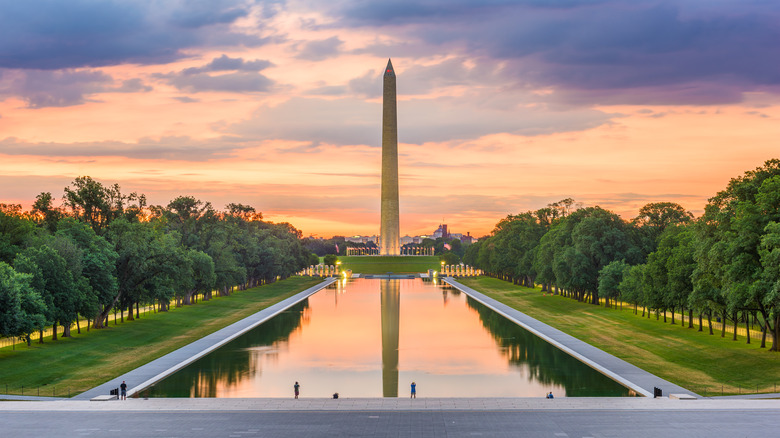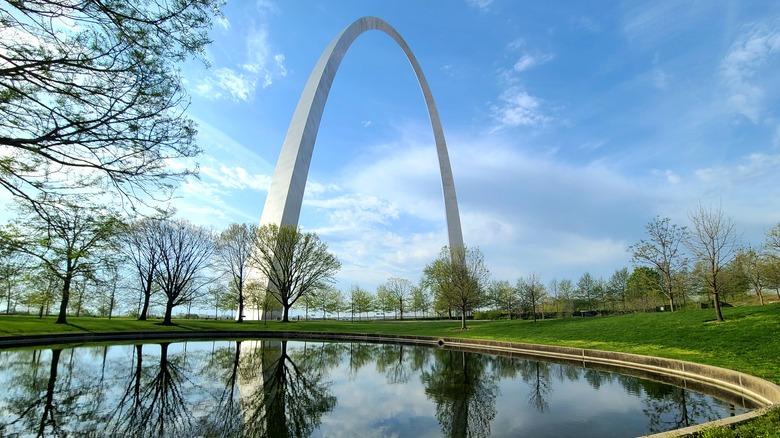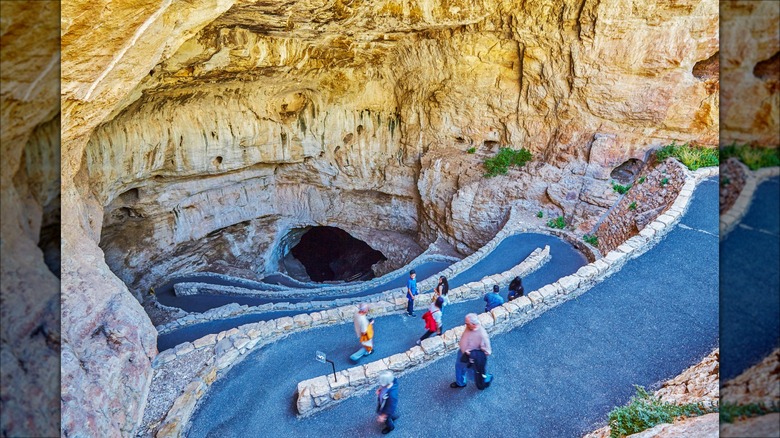These Iconic US Landmarks Are Closed During The Government Shutdown
At midnight on October 1, 2025, the U.S. government entered a shutdown after Congress failed to pass a funding bill. In a nutshell, that means federal government workers deemed non-essential are furloughed, and many government operations are put on pause. This shutdown is already affecting travel: Some flights have been delayed because air traffic controllers — who are required to work during a shutdown — are calling in sick. And there have been outright closures of some federal landmarks. Below are several major sites that currently are — or soon will be — closed. (This is not an exhaustive list; always check your specific destination in advance.)
Washington D.C., is known for its impressive collection of museums — many free – but some are shuttered during the shutdown, and more could close soon. The National Gallery of Art is closed, and you can't currently take a tour of the White House or the U.S. Capitol. You can visit the grounds of the Washington Monument, but you can't go up the elevator to the observation deck at the top.
The Smithsonian's 21 museums and the National Zoo remain open through October 11, 2025, using prior-year funds to stay open. A notification on the website for the Smithsonian Institute confirms that if the shutdown continues past that date, its locations will be closed beginning Sunday, October 12, 2025.
City landmarks and national parks are closed
Major cities across the country have shut down access to their federally managed historic sites. In Philadelphia — the birthplace of America — many sites in Independence National Historical Park are temporarily closed. That means you currently cannot visit the Liberty Bell Center, Independence Hall, or the Benjamin Franklin Museum, among others.
In St. Louis, Missouri, the Gateway Arch — one of the only U.S. national parks located entirely within a city — is partially closed. You cannot take the tram ride to the top of the arch at present, though the activities at the site that aren't managed by the National Park Service, including helicopter tours and riverboat cruises, are still operating. In Atlanta, Georgia, the Martin Luther King Jr. National Historical Park, including the historic Ebenezer Baptist Church, is closed under the shutdown.
Beyond urban landmarks, America's more remote and larger national parks are also being impacted by the shutdown. Across the country, closures and partial restrictions are inconsistent, making it harder to know what is open. But several parks are entirely shuttered. The one-of-a-kind White Sands National Park in New Mexico is closed. Muir Woods National Monument near San Francisco is off limits. Petrified Forest National Park in Arizona and Florissant Fossil Beds National Monument in Colorado are also closed.
National park caves are off limits and many national park visitors centers are shuttered
Underground sites in national parks are also affected by the shutdown. That includes New Mexico's Carlsbad Caverns National Park, South Dakota's Jewel Cave National Monument and Wind Cave National Park, and Kentucky's Mammoth Cave National Park. Caves that normally require guided tours are off limits — even if parts of the park remain open. For example, places like Crystal Cave, which had just reopened earlier in 2025 in Sequoia National Park, are closed under the current shutdown.
Many national parks remain partially open, such as Grand Canyon National Park and Yosemite National Park, but with reduced staffing and curtailed services. Many guided tours, ranger-staffed visitor centers, and other park programs are suspended. Some parks that remain open may still offer limited trash collection or restroom cleaning. A few states are stepping in to help keep parks open, including Utah, Tennessee, and West Virginia; others, such as Arizona and New York, have said they will not. The Trump administration also provided supplemental funding to keep the Statue of Liberty and Ellis Island open to visitors.
No entrance fees are being collected at national parks during the shutdown. During the 35-day government shutdown that began in December 2018, many parks experienced vandalism and environmental damage, and some that were open at the start were forced to close later. So just because a site is open today doesn't mean it will stay that way if the shutdown continues.


